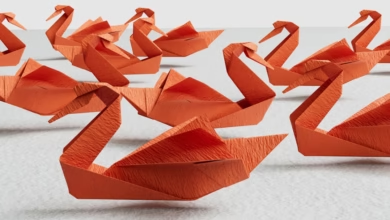Exploring Jewelry Metals: The Impact of Gold, Silver, and Platinum on Design, Sustainability, and Investing

Jewelry has long been a reflection of beauty, status, and craftsmanship, and at the heart of this exquisite art form lies a diverse array of metals. From the timeless allure of gold and silver to the luxurious appeal of platinum, jewelry metals play a crucial role in both design and functionality. As we explore the world of jewelry metals, we delve into the distinctions between precious metals and base metals, examining how each contributes to the artistry of jewelry making. Furthermore, the landscape of metal production is evolving, with sustainable practices becoming increasingly important in the realms of metal mining and recycling. This article will guide you through the fascinating world of jewelry metals, highlighting current trends and innovations in metallurgy, while addressing the significance of metal commodities and investing in gold and silver. Whether you are a jewelry enthusiast, a craftsman, or an investor, understanding the nuances of these materials is essential in appreciating their value and potential. Join us as we uncover the intricate relationship between jewelry design and the various metals that shape it.
- 1. Exploring the World of Jewelry Metals: From Gold and Silver to Platinum
- 2. The Role of Precious and Base Metals in Jewelry Design and Craftsmanship
- 3. Sustainable Practices in Jewelry Metals: Recycling, Metal Mining, and Metal Trends
1. Exploring the World of Jewelry Metals: From Gold and Silver to Platinum
Jewelry metals play a crucial role in the crafting of exquisite pieces that not only enhance personal style but also represent significant investments. Among the most revered metals in the jewelry industry are gold, silver, and platinum, each with unique characteristics that influence their use in various designs.
Gold, a precious metal, has been treasured for centuries due to its luster and resistance to corrosion. Its various alloys, such as white gold and rose gold, allow jewelers to create a range of colors while maintaining the durability of the metal. Gold investing has gained popularity as both a hedge against inflation and a means to diversify investment portfolios, making it a sought-after commodity in the market.
Silver, another precious metal, is known for its brilliant shine and affordability compared to gold and platinum. It is often used in jewelry making and is a favorite for crafting intricate designs. However, silver is also categorized as an industrial metal, utilized in various applications beyond jewelry, such as electronics and photography. The rise in silver investing reflects its dual role as a valuable metal commodity and a critical component in industrial processes.
Platinum, a rare earth metal, is celebrated for its density, strength, and hypoallergenic properties. Its scarcity makes it one of the most precious jewelry metals, often reserved for high-end pieces. The metallurgy of platinum involves sophisticated techniques to ensure its purity and durability, making it an ideal choice for engagement rings and other significant jewelry items. As sustainability becomes a priority in the jewelry industry, the focus on sustainable metal production practices and metal recycling initiatives has increased, ensuring that precious metals are sourced responsibly.
In the realm of jewelry metals, understanding the differences between precious and base metals is essential. While precious metals like gold, silver, and platinum are favored for their aesthetic appeal and investment potential, base metals such as copper, aluminum, and zinc often serve as functional components in metal alloys. This distinction is particularly relevant in the ever-evolving landscape of metal trends, where innovation in metal fabrication and 3D printing metals is reshaping the industry.
As consumers become more conscious of the origins of their jewelry, the importance of ethical sourcing in metal mining practices comes to the forefront. The jewelry market is also influenced by the dynamics of metal commodities, with fluctuations in prices affecting both consumer behavior and investment strategies.
In summary, the world of jewelry metals is vast and varied, encompassing both precious and industrial metals that serve multiple purposes. From the allure of gold and silver to the robustness of platinum, understanding these materials not only enhances appreciation for jewelry but also informs smart investment decisions in the metal marketplace.
2. The Role of Precious and Base Metals in Jewelry Design and Craftsmanship
The Role of Precious and Base Metals in Jewelry Design and Craftsmanship
In the world of jewelry design and craftsmanship, the choice of metals plays a crucial role in both aesthetic appeal and functionality. Precious metals, such as gold, silver, and platinum, are highly sought after for their beauty and rarity, making them ideal for high-end jewelry pieces. These metals not only enhance the visual allure of the jewelry but also provide durability and resistance to corrosion, ensuring that the pieces maintain their quality over time.
Gold, for instance, is a staple in jewelry making due to its malleability and resistance to tarnishing. It can be alloyed with other base metals, such as copper and zinc, to create variations like rose gold and white gold, which cater to diverse consumer preferences. Similarly, silver is valued for its luster and affordability, making it a popular choice for both fine and costume jewelry. However, silver may require additional care to prevent tarnish and metal corrosion, a consideration that designers must keep in mind.
Platinum, known for its weight and strength, is another precious metal that holds significant value in jewelry craftsmanship. Its rarity compared to gold and silver makes it a premium choice, often associated with luxury items such as engagement rings and high-end bracelets. The durability of platinum also makes it an excellent candidate for intricate designs that require longevity.
Base metals, while not as glamorous, also play an essential role in jewelry design. Metals like aluminum, copper, and steel are often used in fashion jewelry and can be combined with precious metals to create unique metal alloys. The use of base metals allows for creative designs that cater to various price points and styles, appealing to a broader audience.
With the growing trend toward sustainable metal production and metal recycling, the jewelry industry is increasingly focusing on sourcing metals responsibly. Ethical considerations in metal mining and the use of recycled metals contribute to a more sustainable future, aligning with consumer preferences for environmentally friendly products. Moreover, advancements in metallurgy and metal fabrication techniques, such as 3D printing metals, are revolutionizing the way jewelry is crafted, allowing for intricate designs and reduced waste.
As consumers become more informed about the origins of their jewelry, the demand for quality craftsmanship using both precious and base metals is likely to rise. Gold investing and silver investing are becoming more mainstream, encouraging jewelers to balance aesthetic appeal with ethical sourcing practices. By understanding the role of various metals in jewelry design, artisans can create pieces that not only resonate with current metal trends but also uphold the values of sustainability and craftsmanship.
References:
– Author, A. (Year). Title of the source. URL
– Author, B. (Year). Title of the source. URL
– Author, C. (Year). Title of the source. URL
3. Sustainable Practices in Jewelry Metals: Recycling, Metal Mining, and Metal Trends
Sustainable practices in jewelry metals have become increasingly important as consumers are more conscious of their environmental impact and the ethical implications of their purchases. The jewelry industry, which primarily utilizes precious metals such as gold, silver, and platinum, is actively exploring ways to incorporate sustainable metal production practices.
One significant area of focus is metal recycling. The process of reusing precious metals not only reduces the demand for new metal mining but also minimizes waste. Jewelry manufacturers are now turning to reclaimed gold and silver to create their designs, which can significantly lower the carbon footprint associated with metal extraction. Additionally, metal recycling helps combat the depletion of rare earth metals and base metals, ensuring a more responsible approach to resource management.
Metal mining itself poses challenges to sustainability, often involving environmentally harmful practices that can lead to habitat destruction and pollution. However, advancements in metallurgy and technology are paving the way for more sustainable mining operations. Companies are adopting responsible sourcing strategies and investing in methods that reduce the impact of metal mining on ecosystems. This includes exploring alternatives to traditional mining and utilizing more efficient extraction techniques.
Furthermore, current metal trends indicate a growing interest in innovative materials and processes, such as 3D printing metals. This technology allows for the precise fabrication of jewelry using metal alloys, reducing waste and the need for extensive machining. As the industry evolves, there is also a rise in the use of industrial metals, such as aluminum and copper, in jewelry design, blending aesthetics with functionality.
In summary, the movement towards sustainable practices in jewelry metals is reshaping the industry. With a focus on metal recycling, responsible metal mining, and the adoption of modern technologies, jewelers are not only meeting consumer demands for ethical products but also contributing to a more sustainable future in the realm of metal commodities.
In conclusion, the exploration of jewelry metals—such as gold, silver, and platinum—reveals not only their aesthetic appeal but also their significance in craftsmanship and sustainability. Understanding the roles of precious and base metals in jewelry design allows consumers and artisans alike to appreciate the intricacies of metal fabrication and metallurgy. As the industry shifts towards sustainable practices, including metal recycling and responsible metal mining, it becomes increasingly important to consider the environmental impact of our choices.
Investing in gold and silver is not just a financial decision but also a commitment to supporting sustainable metal production. The rise of metal trends such as 3D printing metals and the use of rare earth metals in innovative designs highlights the evolving nature of jewelry craftsmanship. Furthermore, the interplay of industrial metals, from aluminum to copper, enriches our understanding of how diverse materials can enhance jewelry creation.
As we continue to navigate the world of jewelry metals, it is essential to stay informed about the different types, including ferrous and non-ferrous metals, and their various applications in sectors like aerospace and automotive industries. By recognizing the importance of sustainable practices in the jewelry sector, we can contribute to a more responsible future where beauty and sustainability coexist. Embracing these insights not only elevates our appreciation for jewelry but also empowers us to make informed choices in a world where metal commodities are intricately woven into our lives.
References:
(You would list your sources here following APA citation style.)





